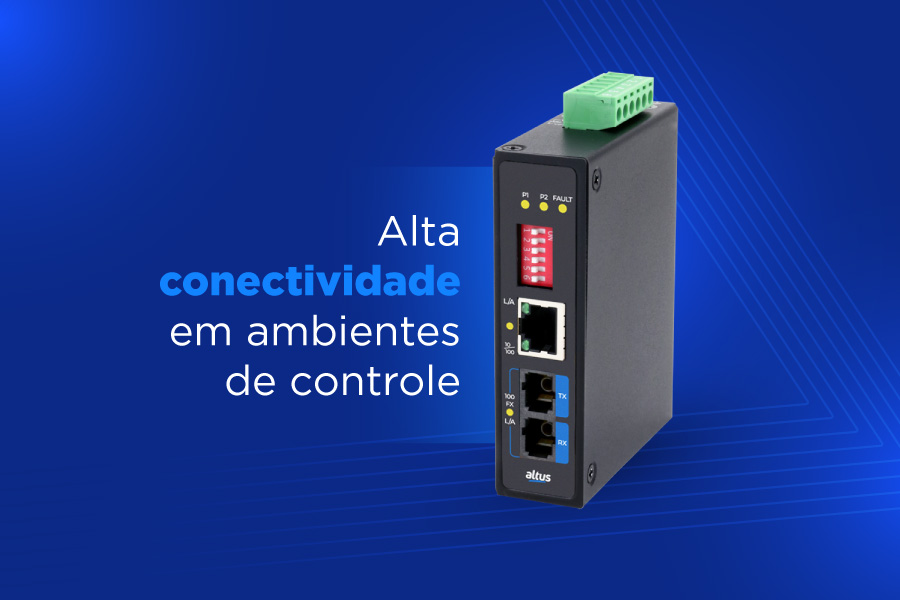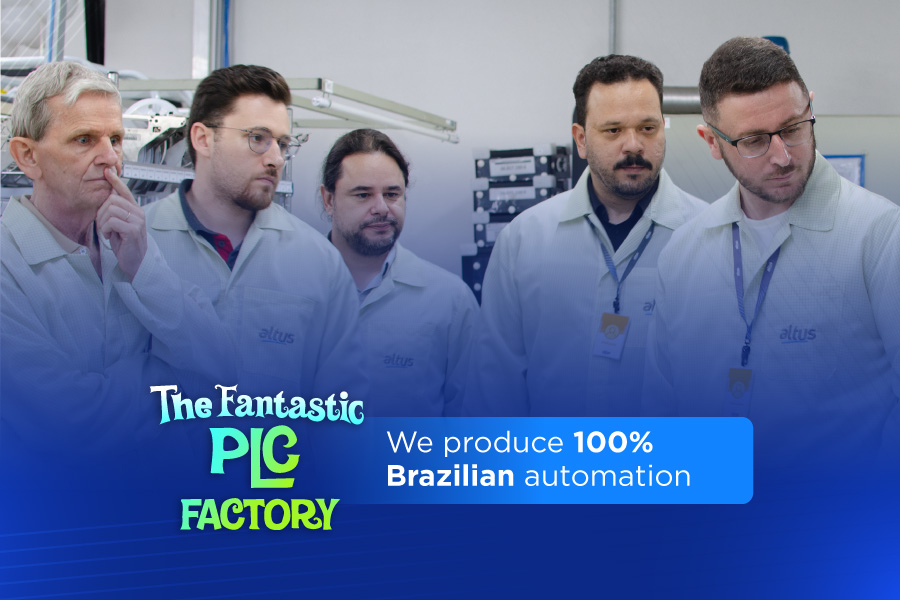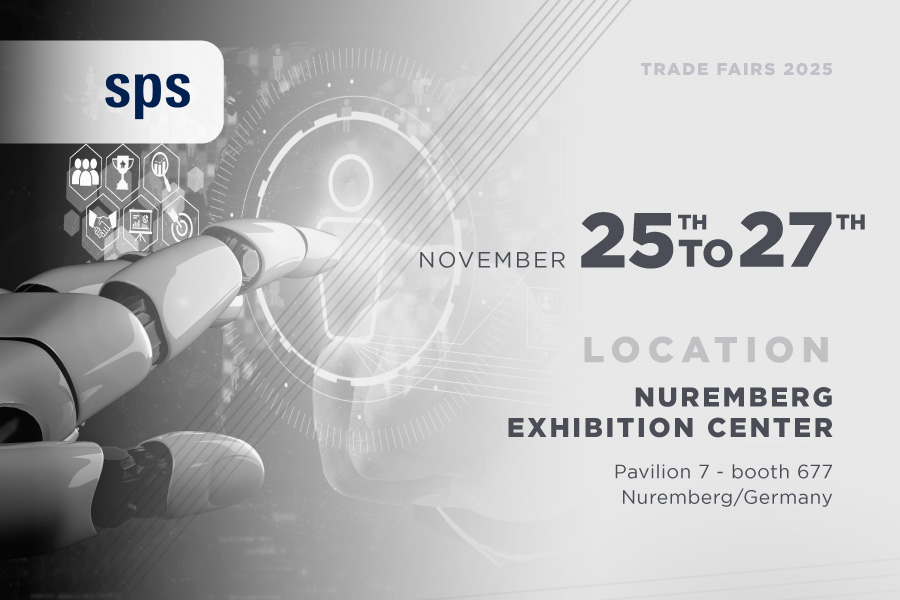The evolution of the components that make up Hydraulic Presses, as well as the better integration of all products, provides a greater increase in the operational efficiency of control systems. The use of Graphical Interfaces, for example, allows for better interaction between the operator and the controlled system. In the case of the hammer control assembly, we can program the equipment's lowering speed using the position reference as a measurement variable and, through mathematical algorithms, calculate the speed of its displacement, thus having the control variable for a proportional flow valve.
This control was only possible because we currently have PLCs with high arithmetic function processing capacity. The XP300, PLC from the Nexto Xpress family of compact controllers, is one of the Altus models capable of executing 1000 floating point instructions in less than 40us.
Speed and energy efficiency with Nexto Xpress PLCs
But there is no point in having high processing capacity if the position information provided by an analog input does not have a compatible resolution and conversion time. In this regard, the Xpress family from Altus stands out once again. The conversion times of the solution's analog inputs are less than 400us, while the scan time is less than 1ms. Furthermore, once the mathematical algorithms have been processed, the PLC is able to provide the information in an analog control output with 12-bit resolution and conversion time of less than 450us.
That's fantastic!
It is also important to highlight energy efficiency. In hydraulic systems, when we continuously operate the pump at a nominal speed, we are certainly wasting electrical energy, because we do not need continuous flow and pressure throughout the machine's operating cycle. Therefore, using a Frequency Inverter to perform control allows for maximizing application performance.
To make the system even more efficient, we can use the CANOp interface available in all PLC models in the Nexto Xpress line, thus providing precise and fast control, preserving digital and analog inputs and outputs for controlling other machine systems.
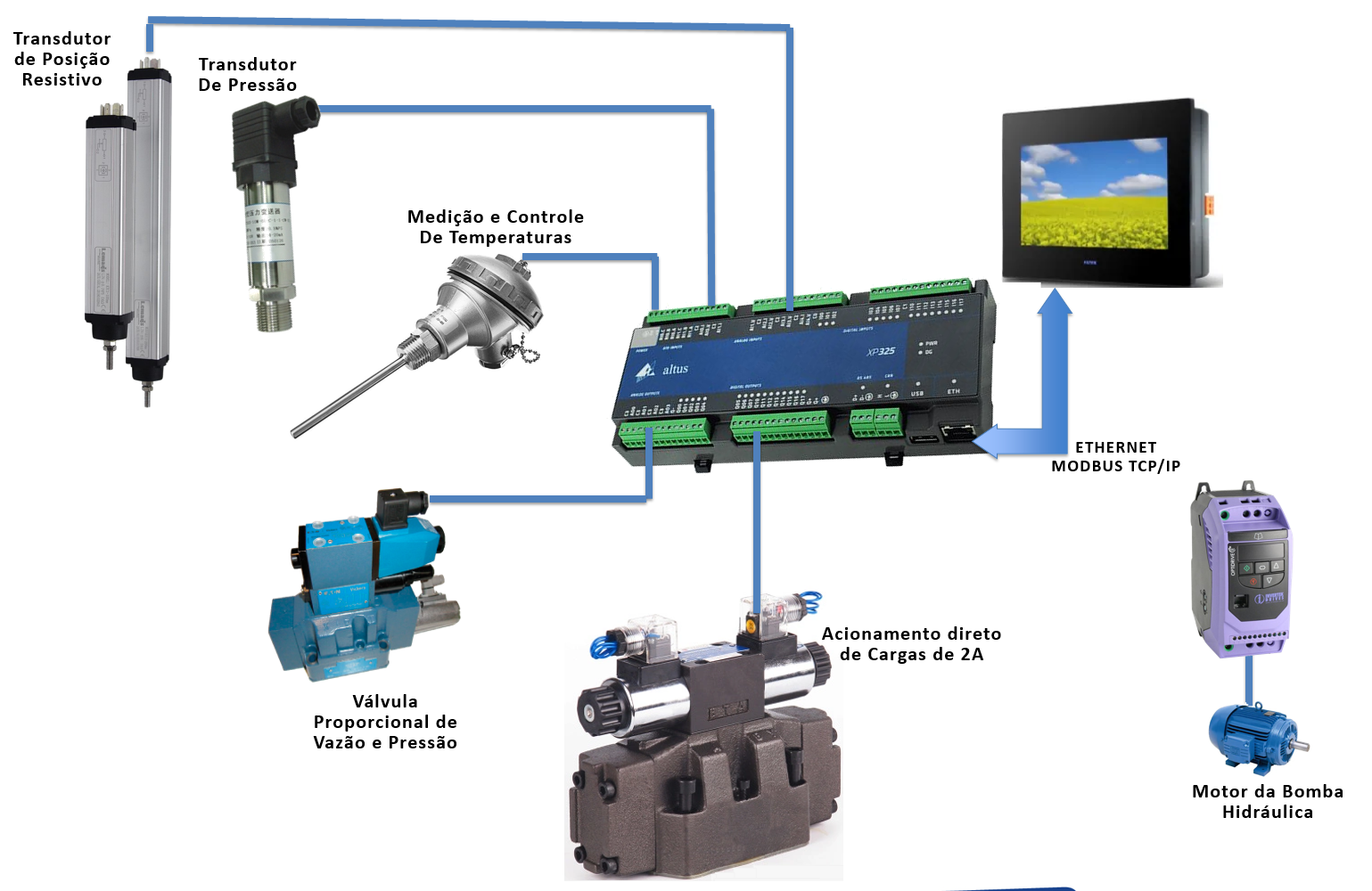
It is also worth highlighting the PLC's capacity to activate Solenoid Valves of up to 40W, which requires 2A of current. This feature, unique in the segment, allows the Xpress to obtain transition times of digital outputs from off to on in the order of 20us, and from on to off in less than 500us!
This capability is of fundamental importance when what we are looking for is performance, because there is no point in having high processing capacity if the peripherals are slow. When we control displacement movements in the order of 1 m/s and we want precision and repeatability, the results obtained with the Nexto Xpress PLC are excellent.
Important tips on engine operation
Please note that adjusting the engine speed to the machine's demands is an important source of operating cost reduction. Operating the pump at the optimum speed will also increase the service life of the system's hydraulic components, reduce the hydraulic fluid's operating temperature and water hammer, and consequently, oil leaks.
We can also see a significant reduction in noise in the work environment, which is extremely healthy.
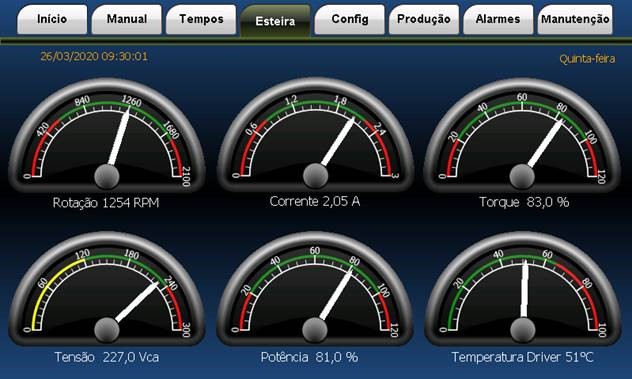
More tips for adjusting your presses
In many industrial processes involving hydraulic units, such as press-type machines, an electric motor operating without control adjustment can be a bottleneck that wastes energy, as it will always be operating at the nominal rotation speed. In the post seven tips to optimize your machine you will see how to obtain greater productivity for your presses with the lowest possible energy consumption.

About the author:
With over 40 years of experience in providing automation and control solutions for the national machine manufacturers market, Daniel Andrade joined the Altus team in 2014 and, since then, has been responsible for the company's business development in the OEM machine market.








